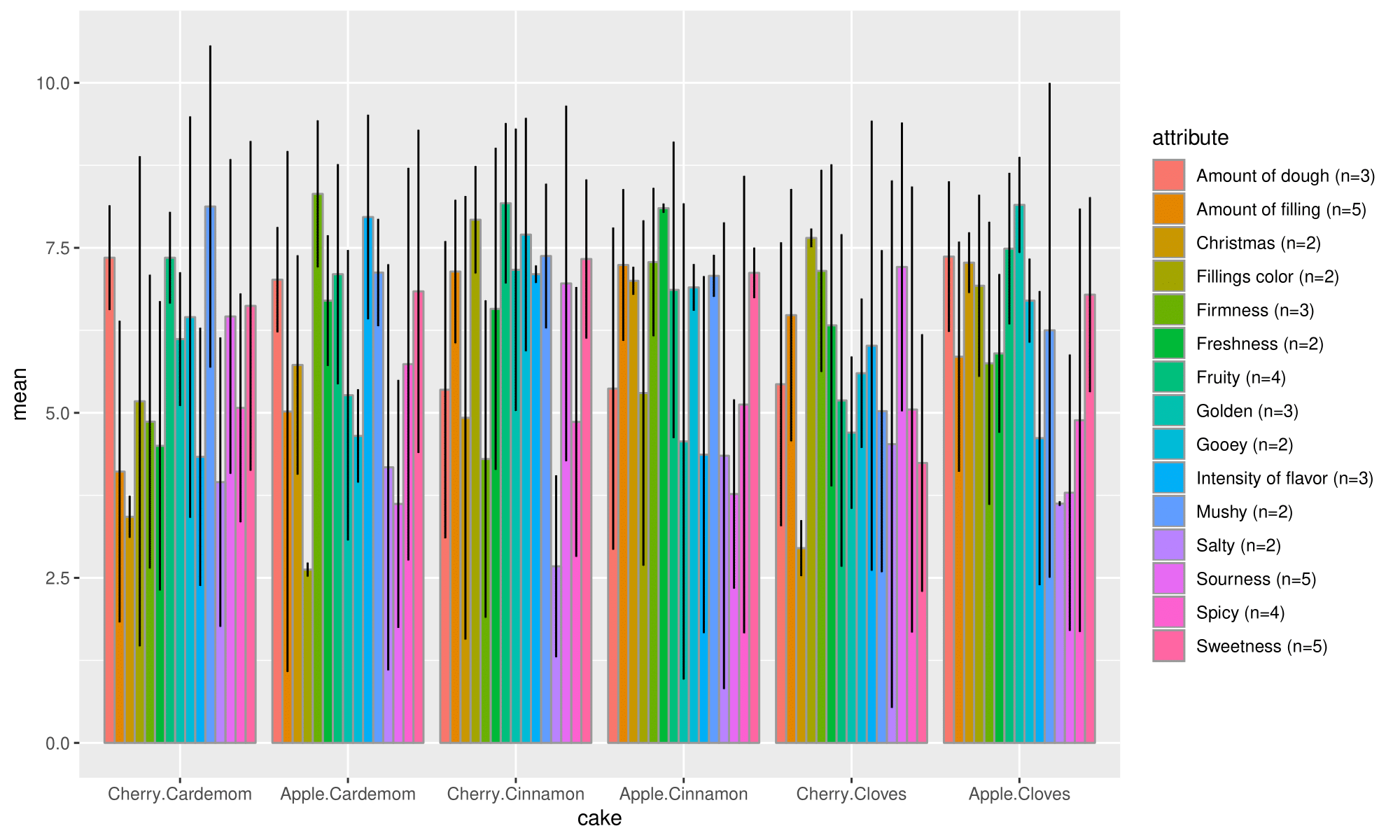Flash Profile
Using descriptive method to determine preferable flavor profiles in medieval fair cakes

I was asked by the medieval fair, Majmarked Viborg to find a new combination of flavors for their cake ÆbleKnægt. I jumped on this opportunity, because I modernized the original recipe from the 15 century and Majmarked Viborg had at this point been selling this cake 5 years. Since the first time I worked with this recipe I have gone from being a baker to now also being 1 year into my MSc in Engineering Psychology at Aalborg University.
 To determine what cake variants were possible to create, I first had to find out what ingredients were used in the 15th century in Denmark. Furthermore were the restrictions that they had to be commercially available for Majmarked Viborg.
This resulted in 6 variants. Next step was to test if they were palatable. I did this by first baking several dosin of each variant and then conducting a hedonic experiment with an improved rating system called Labeled hedonic scale, because it gives ratio level data. All cake variants were liked and my professional pride as a baker was fortunately kept intact.
To determine what cake variants were possible to create, I first had to find out what ingredients were used in the 15th century in Denmark. Furthermore were the restrictions that they had to be commercially available for Majmarked Viborg.
This resulted in 6 variants. Next step was to test if they were palatable. I did this by first baking several dosin of each variant and then conducting a hedonic experiment with an improved rating system called Labeled hedonic scale, because it gives ratio level data. All cake variants were liked and my professional pride as a baker was fortunately kept intact.
 To determine what attributes are associated positively and negatively a descriptive method is needed. The golden standard Descriptive Analysis Method(DAM) is too time consuming for a single semester project and therefore I modified the rapid Flash Profile method to mimic DAM without the extensive training regiment.
The attributes obtained per cake are not homogenised between each participant, but with multidimensional analysis in the form of MFA, biplots can be obtained that shed light on the differentiation of each attribute.
To determine what attributes are associated positively and negatively a descriptive method is needed. The golden standard Descriptive Analysis Method(DAM) is too time consuming for a single semester project and therefore I modified the rapid Flash Profile method to mimic DAM without the extensive training regiment.
The attributes obtained per cake are not homogenised between each participant, but with multidimensional analysis in the form of MFA, biplots can be obtained that shed light on the differentiation of each attribute.
Here it is clearly shown that the only outlier is the clove/cherry combination that is associated with sour and bitterness. Several other factors are found,
such as the dominant attribute that differentiate the cakes are the fruit, not the spices and texture also plays a bigger role than the spices.
